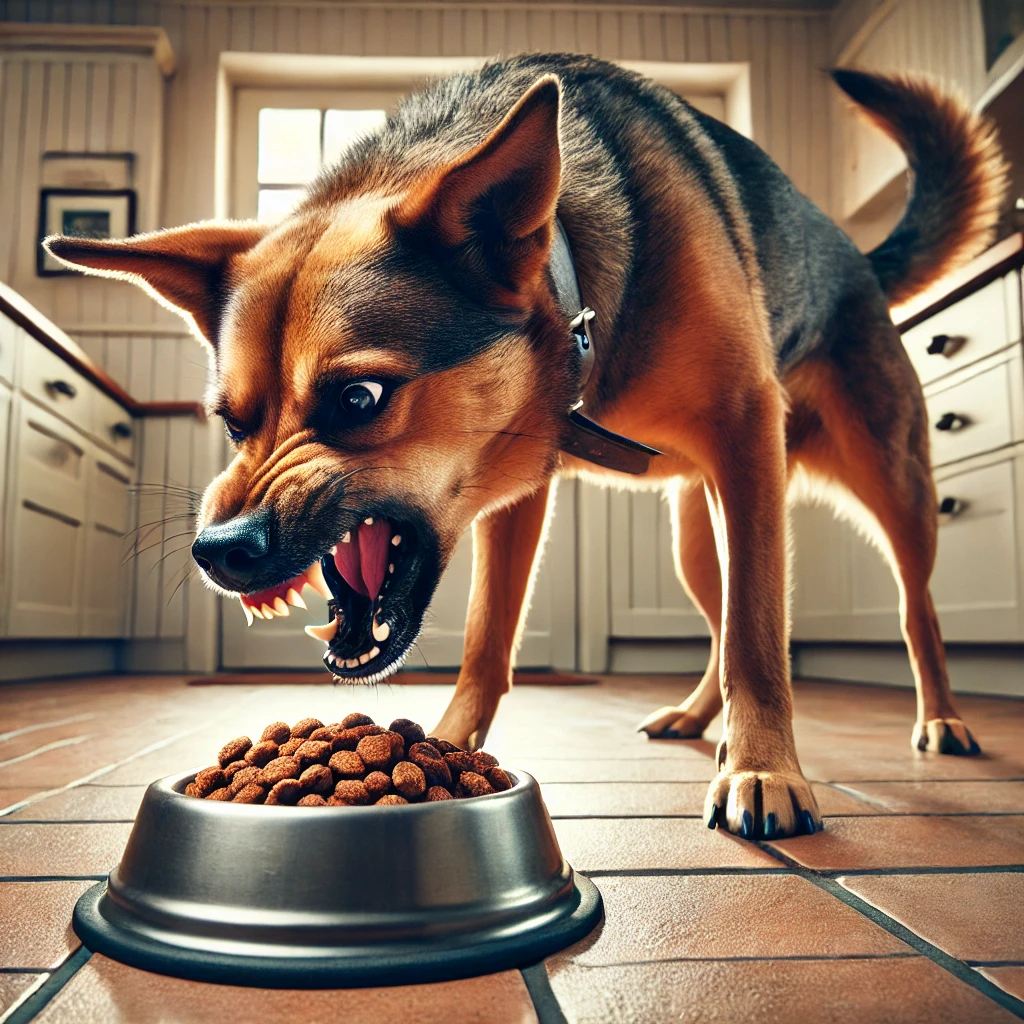Resource guarding is when dogs get super possessive over their food, toys, or other treasures. It can be tricky and even dangerous if not dealt with properly. Here’s how to handle it like a pro.
Recognising Resource Guarding
Signs of Guarding
- Growling or snapping when approached while eating or playing with a toy
- Stiffening or hovering over the resource
- Showing teeth or lunging
Reasons for Resource Guarding
Instinctual Behaviour
Resource guarding is natural and comes from a dog’s instinct to protect valuable resources.
Fear and Insecurity
Dogs may guard resources out of fear of losing them or from past experiences of having their stuff taken away.
Preventing Resource Guarding
Early Socialisation
Start socialising your dog young. Expose them to various people and situations to reduce fear and insecurity.
Teaching Commands
Teach basic commands like “leave it” and “drop it” so your dog knows what to do around valuable items.
Managing Existing Resource Guarding
Do Not Punish
Avoid punishing your dog for guarding. It can increase fear and aggression. Instead, use positive reinforcement.
Trade-Up Method
Offer your dog a higher-value item in exchange for the guarded resource. This teaches them that giving up an item leads to a better reward.
Controlled Feeding
Feed your dog in a quiet, secure area where they feel safe. Avoid disturbing them while they eat.
Training Techniques
Desensitisation and Counter-Conditioning
Gradually expose your dog to situations that trigger guarding while offering positive rewards. This changes their emotional response to the situation.
Practise Handling
Gently handle your dog’s food and toys while rewarding them. This helps them associate your presence with positive outcomes.
When to Seek Professional Help
Persistent Guarding
If resource guarding persists despite your efforts, consult a professional dog trainer or behaviourist. They can provide tailored strategies and support.
Safety Tips
Supervision
Supervise interactions between your dog and other pets or children, especially during meals or playtime.
Secure Environment
Create a safe, secure environment where your dog feels comfortable and less likely to guard resources.
Conclusion
Managing resource guarding involves understanding the behaviour and using positive reinforcement techniques. With patience and consistency, you can reduce guarding tendencies and ensure a safe, harmonious environment for your dog.







